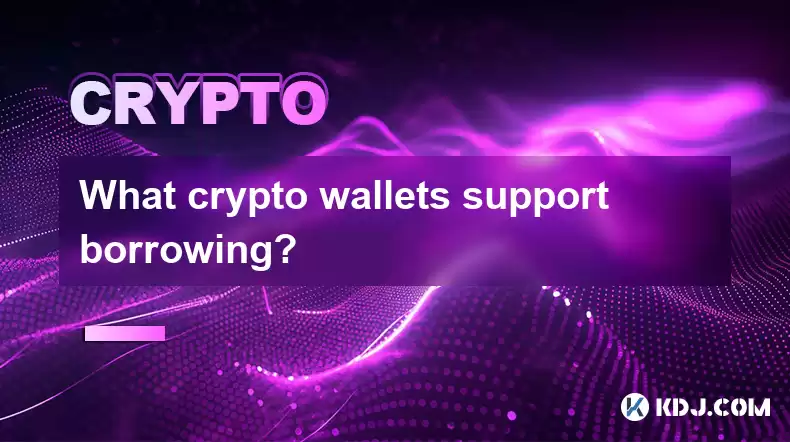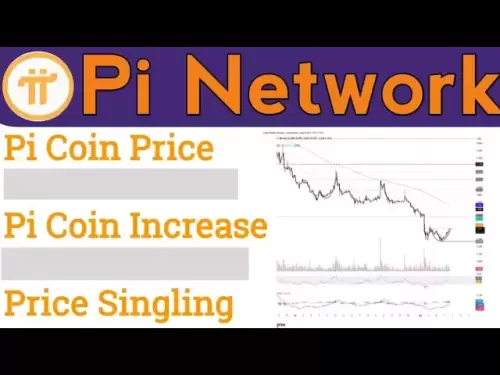-
 Bitcoin
Bitcoin $116900
0.00% -
 Ethereum
Ethereum $4280
5.48% -
 XRP
XRP $3.265
-1.45% -
 Tether USDt
Tether USDt $1.000
-0.01% -
 BNB
BNB $807.0
1.41% -
 Solana
Solana $183.1
2.93% -
 USDC
USDC $0.9999
0.00% -
 Dogecoin
Dogecoin $0.2440
6.50% -
 TRON
TRON $0.3357
-0.88% -
 Cardano
Cardano $0.8178
2.63% -
 Hyperliquid
Hyperliquid $44.13
7.45% -
 Chainlink
Chainlink $21.39
9.09% -
 Stellar
Stellar $0.4524
-0.84% -
 Sui
Sui $3.957
2.13% -
 Bitcoin Cash
Bitcoin Cash $572.7
-2.54% -
 Hedera
Hedera $0.2671
1.54% -
 Avalanche
Avalanche $24.77
4.17% -
 Ethena USDe
Ethena USDe $1.001
0.02% -
 Litecoin
Litecoin $122.3
-1.94% -
 Toncoin
Toncoin $3.432
2.26% -
 UNUS SED LEO
UNUS SED LEO $9.007
0.49% -
 Shiba Inu
Shiba Inu $0.00001396
5.26% -
 Uniswap
Uniswap $11.09
1.64% -
 Polkadot
Polkadot $4.155
4.57% -
 Dai
Dai $1.000
0.00% -
 Pepe
Pepe $0.00001253
5.11% -
 Cronos
Cronos $0.1588
2.67% -
 Bitget Token
Bitget Token $4.512
0.05% -
 Monero
Monero $275.0
0.64% -
 Ethena
Ethena $0.7527
15.10%
What crypto wallets support borrowing?
You can borrow crypto assets from popular wallets like AAVE, Compound, MakerDAO, Uniswap, and dYdX by first selecting a wallet, creating an account, and providing collateral to secure the loan.
Feb 06, 2025 at 03:36 pm

Key Points:
List of Crypto Wallets Supporting Borrowing:
- AAVE
- Compound
- MakerDAO
- Uniswap
- dYdX
Steps to Borrow Crypto Using Wallets:
- Selecting a wallet
- Creating an account
- Connecting to a trusted broker or exchange
- Providing collateral
- Choosing a loan term and interest rate
- Repaying the loan and withdrawing funds
Tips for Secure Borrowing:
- Understanding loan terms and associated risks
- Maintaining a strong financial position
- Only borrowing what can be repaid on time
- FAQs on Crypto Lending:
List of Crypto Wallets Supporting Borrowing:
1. AAVE:
- Aave is a decentralized non-custodial liquidity protocol that allows users to borrow and lend crypto assets without intermediaries.
- It operates on the Ethereum, Polygon, and Avalanche blockchains, offering a wide range of cryptocurrencies for borrowing and lending.
- Aave provides flexible loan terms and interest rates determined by market demand and supply.
2. Compound:
- Compound is a decentralized protocol that enables users to borrow and lend crypto assets through a set of smart contracts.
- It operates on the Ethereum blockchain and supports various cryptocurrencies, including DAI, USDC, ETH, and BAT.
- Compound features an automated interest rate mechanism that adjusts based on supply and demand.
3. MakerDAO:
- MakerDAO is a decentralized autonomous organization that operates the Maker Protocol, an infrastructure for the stablecoin DAI.
- The Maker Protocol allows users to borrow DAI by collateralizing their crypto assets.
- Borrowed DAI can be used to participate in DeFi activities, make purchases, or hedge against price swings.
4. Uniswap:
- Uniswap is a decentralized exchange (DEX) that allows users to trade crypto assets directly with each other.
- It recently launched a lending feature called Uniswap v3, enabling users to provide liquidity and borrow assets.
- Uniswap v3 offers flexible loan terms, competitive interest rates, and support for a range of cryptocurrencies.
5. dYdX:
- dYdX is a decentralized derivatives exchange that allows users to trade perpetual contracts and margin trade crypto assets.
- It also offers a spot trading platform and a lending feature, enabling users to borrow and lend assets from other traders.
- dYdX utilizes a robust risk management system and advanced order types.
Steps to Borrow Crypto Using Wallets:
1. Selecting a Wallet:
- Choose a crypto wallet that supports borrowing and meets your security and functionality requirements.
- Consider factors such as supported currencies, fees, security features, and user interface.
2. Creating an Account:
- Create an account with the selected wallet and securely store your private keys.
- Ensure you enable any additional security measures provided by the wallet.
3. Connecting to a Broker or Exchange:
- Connect your wallet to a trusted broker or exchange that offers lending services.
- This can involve linking your wallet to the exchange's platform or using a third-party bridge.
4. Providing Collateral:
- Determine the type of collateral you need to pledge based on the loan terms offered by the lender.
- Transfer the collateral to the designated address or smart contract.
5. Choosing a Loan Term and Interest Rate:
- Select the desired loan period and interest rate for your borrowing.
- Consider the repayment schedule and the associated loan fees.
6. Repaying the Loan and Withdrawing Funds:
- Make regular payments on your loan as per the agreed-upon schedule.
- Once the loan is repaid, you can withdraw your collateral and any accumulated interest earned.
Tips for Secure Borrowing:
1. Understanding Loan Terms and Risks:
- Carefully review loan agreements and fully understand the repayment obligations, interest rates, and potential penalties.
- Assess your financial situation and ensure you are able to repay the loan on time.
2. Maintaining a Strong Financial Position:
- Only borrow funds that you truly need and can afford to repay.
- Avoid overleveraging by borrowing beyond your means or exposing yourself to excessive risk.
3. Utilizing Trusted Platforms:
- Choose established and reputable exchanges or brokers when borrowing crypto assets.
- Ensure these platforms have implemented robust security practices and are reliable.
FAQs on Crypto Lending:
Q: What are the benefits of borrowing crypto?
- Leverage trading: Amplify returns by borrowing assets and using them to trade or invest.
- Hedge against risks: Borrow stablecoins to hedge against price fluctuations or use crypto as collateral for loans.
- Earn interest: Lend your crypto and earn interest returns, generating a passive income stream.
Q: What are the risks of borrowing crypto?
- Price volatility: Crypto asset prices can fluctuate significantly, potentially leading to losses if borrowed funds are not repaid on time.
- Margin calls: In case of extreme price fluctuations, lenders may issue margin calls, requiring you to add more collateral or repay the loan immediately.
- Liquidation: Failure to repay the loan or maintain sufficient collateral may result in liquidation of your assets to cover the debt.
Disclaimer:info@kdj.com
The information provided is not trading advice. kdj.com does not assume any responsibility for any investments made based on the information provided in this article. Cryptocurrencies are highly volatile and it is highly recommended that you invest with caution after thorough research!
If you believe that the content used on this website infringes your copyright, please contact us immediately (info@kdj.com) and we will delete it promptly.
- Shiba Inu, Pepe, and Remittix: A Tale of Memes, Hype, and Real-World Utility
- 2025-08-10 08:30:12
- Ethereum Price, ETH Tokens, Rally Prediction: Is a New All-Time High In Sight?
- 2025-08-10 08:30:12
- XRP, Elon Musk, and Wealth: A Crypto Conundrum
- 2025-08-10 08:50:12
- Retire Early with Crypto: High-Conviction Plays Beyond Bitcoin
- 2025-08-10 08:50:12
- BlockDAG, Render, and Polkadot: Charting the Course for Long-Term Crypto Dominance
- 2025-08-10 08:55:21
- Toncoin's Ascent: Price Predictions and the VERB Strategy Impact
- 2025-08-10 08:55:21
Related knowledge

What is Ethereum’s Slashing mechanism and how to punish malicious behavior?
Feb 20,2025 at 03:08am
Key PointsOverview of slashingDifferent types of slashing in EthereumIncentives and consequences of slashingIdentifying and reporting slashed validato...

What is the verifier node of Ethereum and how to become a verifier?
Feb 19,2025 at 06:00pm
The Verifier Node of Ethereum: A Comprehensive GuideKey Points:What is a Verifier Node?How to Become a Verifier NodeResponsibilities and Rewards of a ...

What is Ethereum’s staking, and how to participate and earn money?
Feb 19,2025 at 04:37pm
Key Points:Understanding Ethereum's Staking MechanismSteps to Participate in StakingBenefits and Rewards of StakingSecurity and Risk ConsiderationsTec...

What is Ethereum’s DAO (Decentralized Autonomous Organization) and how does it work?
Feb 20,2025 at 03:12am
Key PointsDefinition and Structure of a DAOGovernance and Decision-Making in DAOsBenefits and Use Cases of DAOsChallenges and Limitations of DAOsWhat ...

What is Ethereum's multi-signature wallet and how to improve security?
Feb 20,2025 at 02:18pm
Key Points:Understanding the Concept of a Multi-Signature WalletBenefits and Drawbacks of Multisig WalletsRequirements for Setting Up a Multisig Walle...

What is Ethereum's oracle and how to provide data for smart contracts?
Feb 21,2025 at 01:30am
Key Points:Understanding the concept of oracles in EthereumExploring different types of oraclesDetailed guide on how to provide data for smart contrac...

What is Ethereum’s Slashing mechanism and how to punish malicious behavior?
Feb 20,2025 at 03:08am
Key PointsOverview of slashingDifferent types of slashing in EthereumIncentives and consequences of slashingIdentifying and reporting slashed validato...

What is the verifier node of Ethereum and how to become a verifier?
Feb 19,2025 at 06:00pm
The Verifier Node of Ethereum: A Comprehensive GuideKey Points:What is a Verifier Node?How to Become a Verifier NodeResponsibilities and Rewards of a ...

What is Ethereum’s staking, and how to participate and earn money?
Feb 19,2025 at 04:37pm
Key Points:Understanding Ethereum's Staking MechanismSteps to Participate in StakingBenefits and Rewards of StakingSecurity and Risk ConsiderationsTec...

What is Ethereum’s DAO (Decentralized Autonomous Organization) and how does it work?
Feb 20,2025 at 03:12am
Key PointsDefinition and Structure of a DAOGovernance and Decision-Making in DAOsBenefits and Use Cases of DAOsChallenges and Limitations of DAOsWhat ...

What is Ethereum's multi-signature wallet and how to improve security?
Feb 20,2025 at 02:18pm
Key Points:Understanding the Concept of a Multi-Signature WalletBenefits and Drawbacks of Multisig WalletsRequirements for Setting Up a Multisig Walle...

What is Ethereum's oracle and how to provide data for smart contracts?
Feb 21,2025 at 01:30am
Key Points:Understanding the concept of oracles in EthereumExploring different types of oraclesDetailed guide on how to provide data for smart contrac...
See all articles

























































































